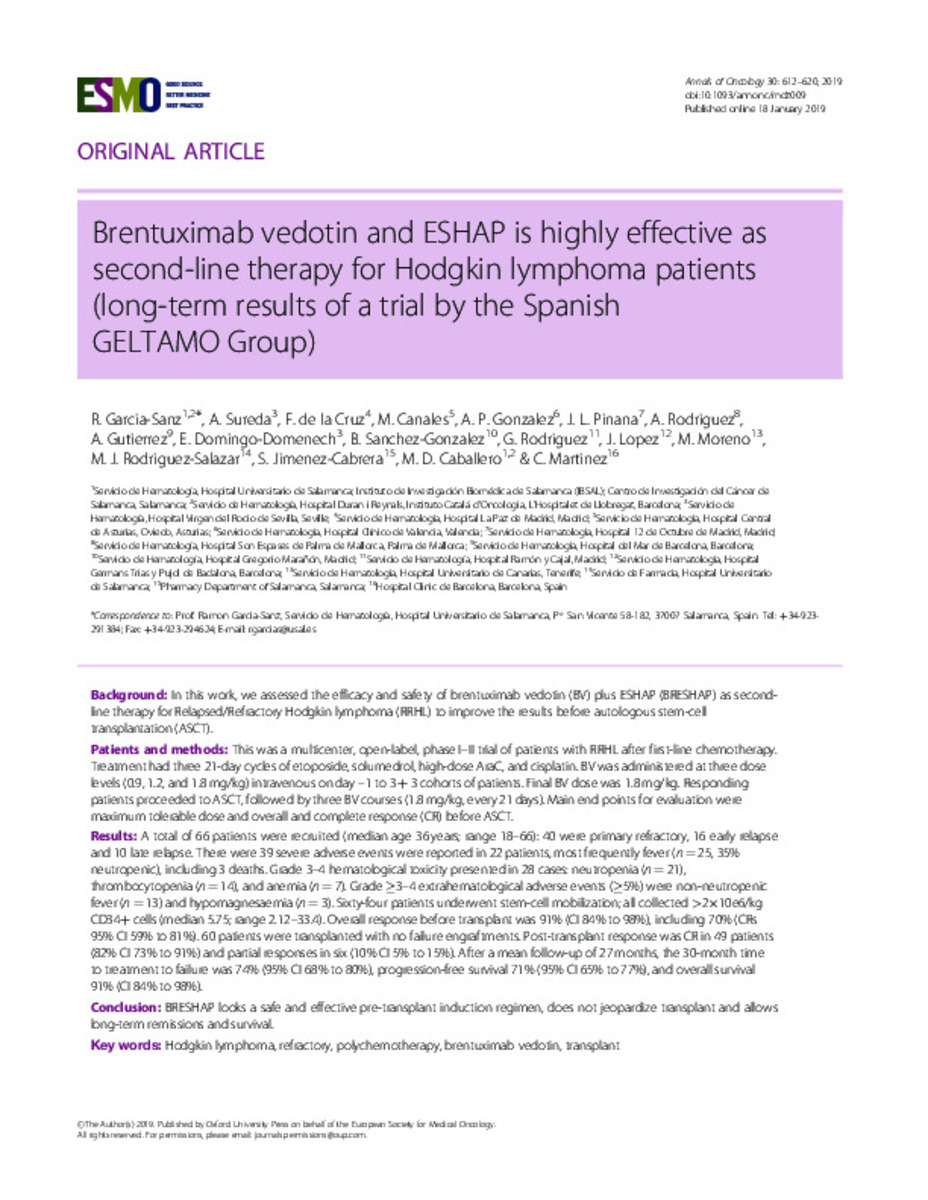Brentuximab vedotin and ESHAP is highly effective as second-line therapy for Hodgkin lymphoma patients (long-term results of a trial by the Spanish GELTAMO Group)
Keywords:
Hodgkin lymphoma
Refractory
Polychemotherapy
Brentuximab vedotin
Transplant
Editorial note:
Copyright © 2019 THE AUTHORS. Published by Elsevier Ltd. All rights reserved
Citation:
Canales-Albendea, M. A. (Miguel Ángel); García-Sanz, R. (Ramón); Sureda-Balari, A. M. (Anna Maria); et al. "Brentuximab vedotin and ESHAP is highly effective as second-line therapy for Hodgkin lymphoma patients (long-term results of a trial by the Spanish GELTAMO Group)". Annals of Oncology. 30 (4), 2019, 612 - 620
Statistics and impact
0 citas en

0 citas en

Items in Dadun are protected by copyright, with all rights reserved, unless otherwise indicated.








